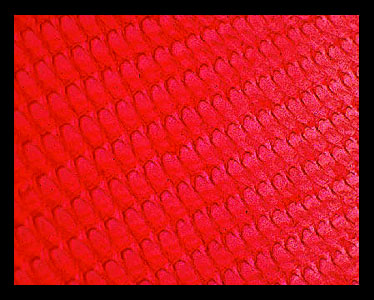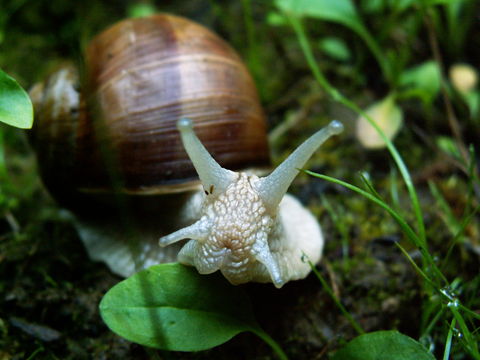
Nutrition
Because Millerelix gracilis is not a regularly
studied snail, its specific diet and feeding habits are not
commonly known. However, relatives of this snail can expose
similarities and the tendencies of Millerelix gracilis.
The phylum Mollusca (which includes Millerelix gracilis)
is known to feed on fungi (Wolf et. al., 1939).
Trails and designs in fungi found on leaves are how scientists determined
this as a food source (Wolf et. al., 1939).
 Magnified snail radula (Image by Rick
Gillis)
Magnified snail radula (Image by Rick
Gillis)
A snail feeds by stretching its body out of his shell
(Wolf et.
al., 1939). Then, it scrapes fungi in a circular motion with a
mouthpart called the radula (Wolf et. al., 1939). Finally, it
creeps forward and continues to feed (Wolf et. al., 1939).
The radula is most comparable to a tongue
(Hickman et. al.,
2012). Tooth-like projections on this “tongue” are made of
chitin, a substance also found in invertebrate exoskeletons
(Hickman et. al., 2012 and European Chitin Society,
2005). These teeth
are specifically what scrapes the fungi (Hickman et. al.,
2012).
Snail in environment (Image by Encyclopedia of Life)

The image above by Rick Gillis shows a microscopic view of the
chitinous teeth on the radula
(Gillis, 2012). After passing
through the mouth with the radula, the food continues along the
digestive tract through the crop where food can be stored before
entering the stomach, intestine, and finally the anus
(Hickman et. al., 2012 and Gillis, 2012).
The circulatory system of Gastropods is open, meaning, the
“blood” (referred to as hemocoel) is pumped into cavities throughout
the snail, rather than being transported through veins and arteries
(Gastropoda, 2000).